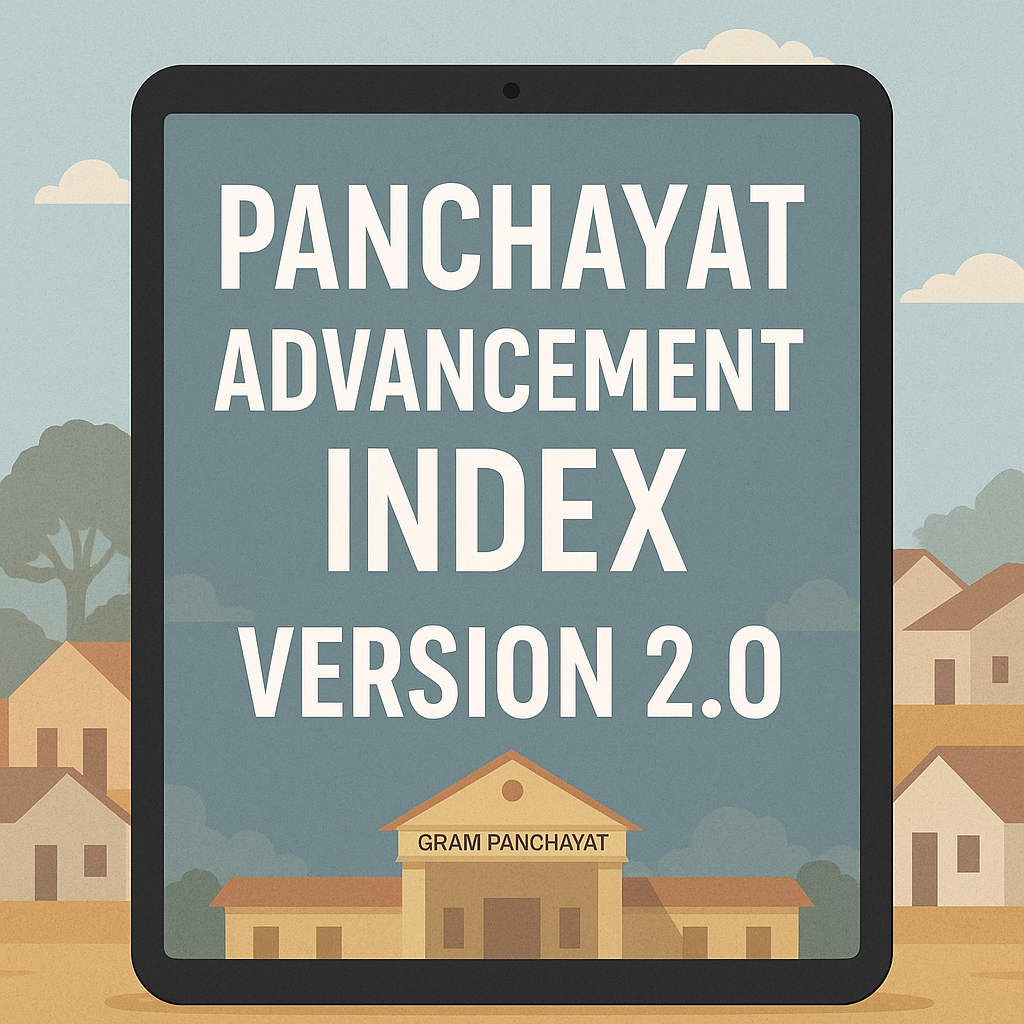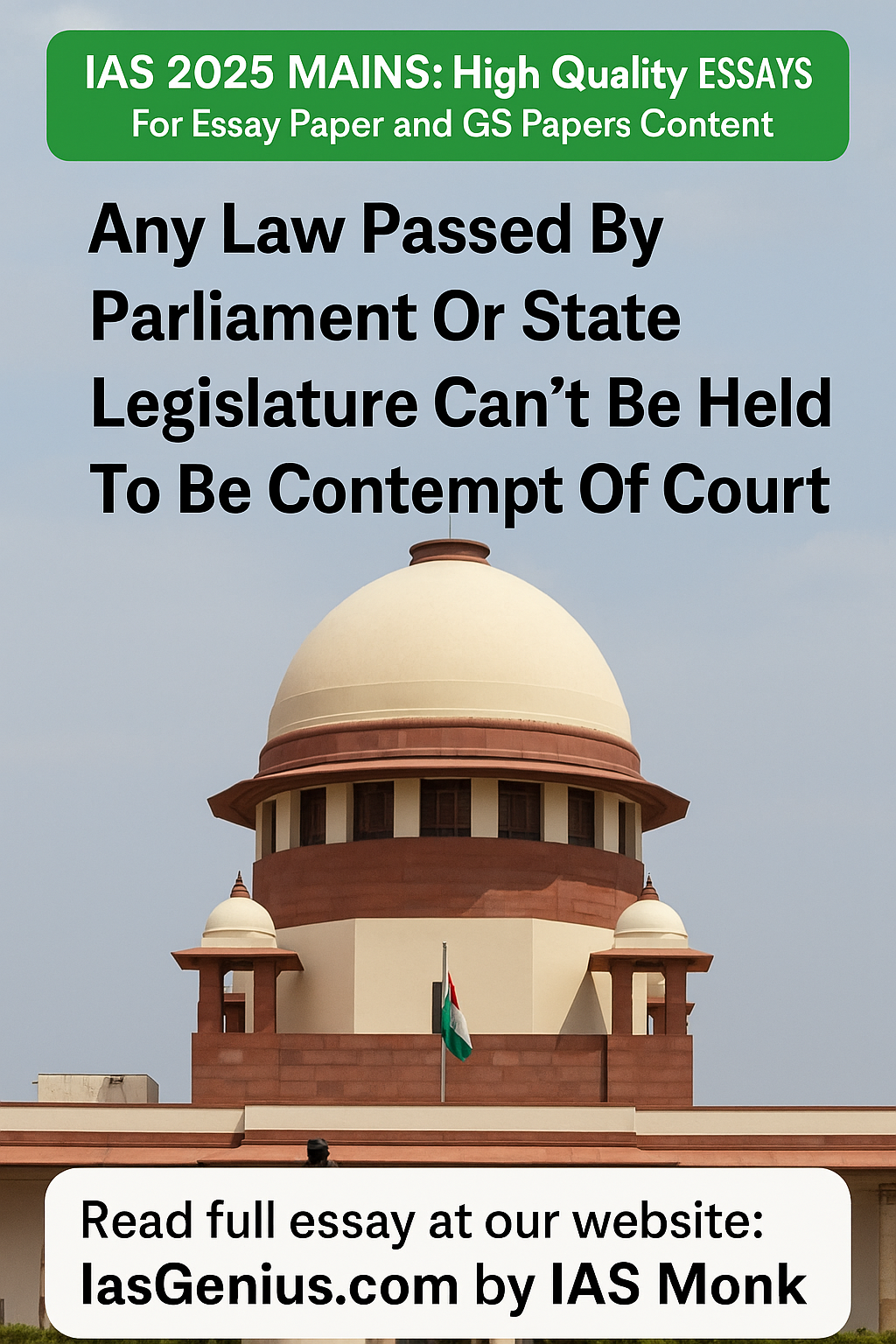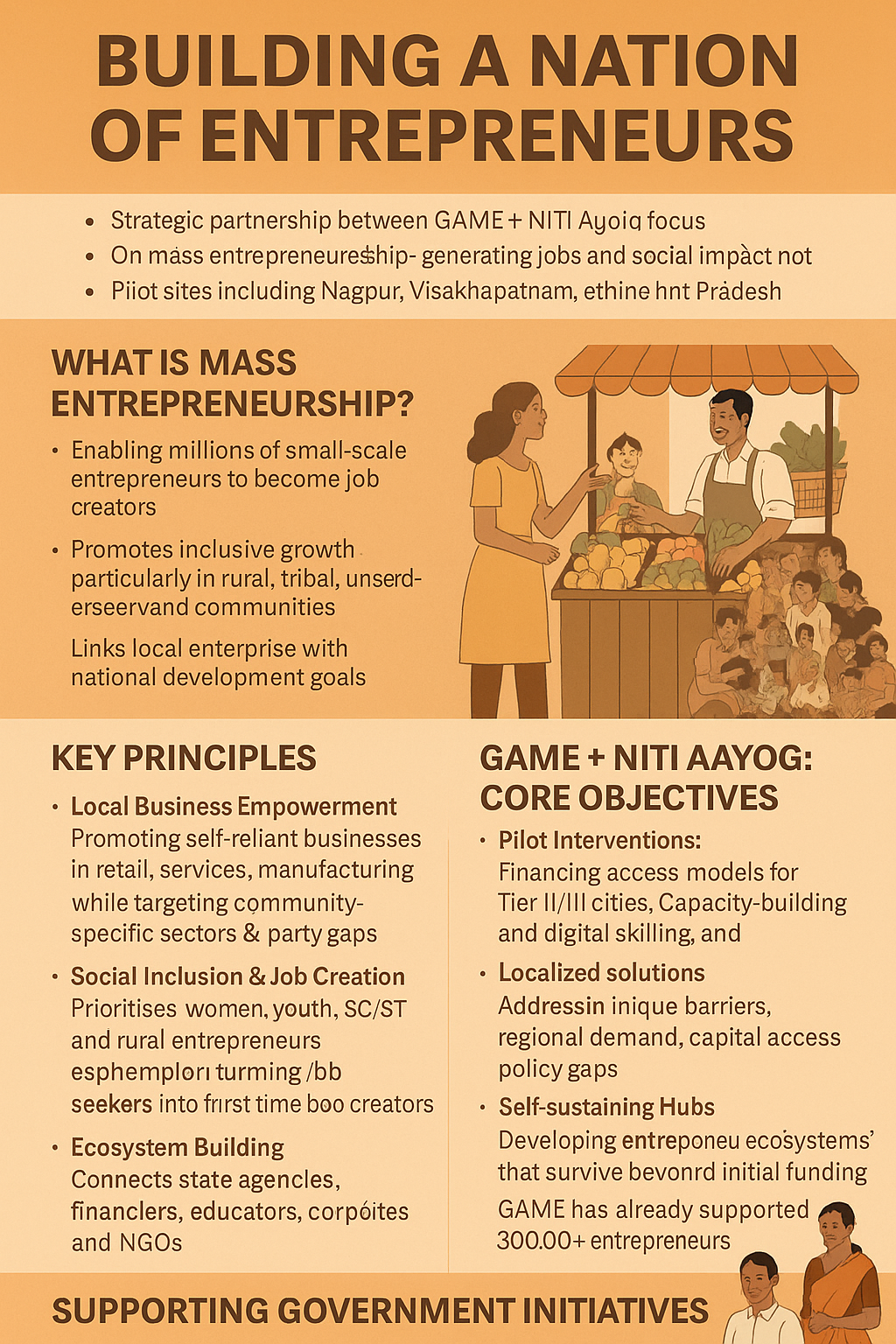
🧭May 30, 2025 Post 2: Panchayat Advancement Index 2.0: Empowering Local Governance with Precision — A Strategic Engine for Sustainable Growth | High Quality Mains Essay | Prelims MCQs
Panchayat Advancement Index 2.0: Empowering Local Governance with Precision

GOVERNANCE HERO —
Post Date: 30 May 2025
Syllabus: GS Paper 2 – Local Governance, e-Governance, SDG Localization
Category: Panchayati Raj / Performance Index / Data-Driven Governance
🎯 Thematic Focus:
Decentralisation, SDG Localization, Data Transparency in Rural Governance
🌿 Intro Whisper:
When a village measures its own strength, it learns to govern not by guess — but by grace, by data, and by the dreams it keeps alive.
🗝️ Key Highlights
- Launch of PAI 2.0: The National Writeshop in New Delhi marked the launch of the Panchayat Advancement Index (PAI) Version 2.0, along with a dedicated portal, Standard Operating Procedure, and Local Indicator Framework Booklet.
- Purpose: Designed to assess and improve governance in over 2.5 lakh Gram Panchayats, PAI 2.0 links local planning with national and global development goals.
- Upgraded Framework:
- Total indicators reduced by 72% from previous version
- 147 streamlined indicators now enable better data quality and usability
- Alignment with SDGs: The index is aligned with the Localisation of Sustainable Development Goals (LSDGs) — transforming rural self-assessment into a globally relevant governance tool.
📚 Concept Explainer
🧭 What is the Panchayat Advancement Index (PAI)?
- A national tool developed by the Ministry of Panchayati Raj
- Provides a performance dashboard for Panchayats
- Encourages evidence-based planning and community accountability
- Assesses both infrastructure and social development across themes
🧩 Nine Key Themes of PAI 2.0
- Poverty-Free & Enhanced Livelihoods Panchayat
- Healthy Panchayat
- Child-Friendly Panchayat
- Water-Sufficient Panchayat
- Clean & Green Panchayat
- Self-Sufficient Infrastructure Panchayat
- Socially Just & Socially Secured Panchayat
- Panchayat with Good Governance
- Women-Friendly Panchayat
These themes act as pillars for rural transformation, aligning grassroots efforts with SDG indicators.
🧾 Data Entry & Reporting Norms
- Panchayats are encouraged to digitally enter and publicly display scores.
- This fosters transparency, community participation, and comparative analysis across states.
- Acts as a self-motivating tool for competitive governance in rural India.
🌍 National & Global Relevance
- Supports Voluntary National Reviews (VNRs) for India’s SDG reporting at UN platforms
- Complements existing efforts like the SDG India Index and Local Government Performance Index
- Enables convergence of bottom-up planning with top-down policy vision
🛠️ Way Forward
- Capacity Building: States must train panchayat functionaries to collect quality data
- Digital Literacy: Enhanced support for remote panchayats to access and use the portal
- Incentives for High Performers: Recognition for top-ranking Panchayats can inspire wider adoption
- AI-Driven Analytics: Long-term potential to develop predictive dashboards for policy interventions
🗺️ GS Mains Mapping
- GS Paper 2:
- Panchayati Raj and Devolution of Powers
- e-Governance Applications in Rural India
- Role of Data in Development
- GS Paper 3:
- Inclusive Growth and Sustainable Development
- Rural Infrastructure & Planning
💭 A Thought Spark — by IAS Monk
“The Panchayat is not the footnote of democracy — it is its first sentence. With each index, it does not merely count its achievements; it counts its citizens as worthy of vision.”
High Quality Mains Essay For Practice :
Word Limit 1000-1200
Panchayats and Decentralization in India: A Myth or a Living Truth?
Introduction
India’s democratic foundation rests not only in its Parliament but in its panchayats — the grassroots institutions of self-governance. Envisioned by Mahatma Gandhi as the lifeblood of “Gram Swaraj,” the Panchayati Raj system was institutionalized through the 73rd Constitutional Amendment Act of 1992, which gave constitutional status to village councils. With over 2.5 lakh Gram Panchayats, India boasts the largest decentralized governance system in the world.
Yet, thirty years on, one must ask: Is decentralization in India a celebrated myth or a substantive truth? While panchayats today play vital roles in delivering schemes, maintaining records, and resolving local disputes, they also struggle with capacity constraints, limited autonomy, and bureaucratic dependencies. This essay critically evaluates the status of decentralization in India through the lens of panchayats — highlighting progress, gaps, and the road ahead.
The Spirit and Structure of Decentralization
Decentralization implies delegation of power, responsibility, and resources to the lowest levels of governance. In India, it means empowering rural local bodies to plan, execute, and monitor their development.
The 73rd Amendment introduced three core elements of decentralized governance:
- Constitutional Mandate: Creation of a three-tier system — Gram Panchayat (village), Panchayat Samiti (block), and Zilla Parishad (district).
- Devolution of Powers: 29 subjects listed in the Eleventh Schedule, including education, health, agriculture, and water management, were to be transferred.
- Democratic Representation: Direct elections every five years, reservation for SCs/STs and women (now one-third, with many states adopting 50%).
However, decentralization is not merely about structure — it also involves functional autonomy, financial empowerment, and capacity to deliver. It is here that India’s panchayati raj system swings between truth and illusion.
Decentralization: Achievements that Cannot Be Denied
1. Widespread Democratic Participation
- Over 30 lakh elected representatives, including 14 lakh women, form the base of local democracy.
- Women’s reservation has enhanced political agency, especially in states like Bihar, Kerala, and Rajasthan.
2. Effective Scheme Implementation
Panchayats have become the delivery arm of flagship schemes:
- Swachh Bharat Abhiyan
- MGNREGA
- Pradhan Mantri Awas Yojana (Gramin)
- Jal Jeevan Mission
3. Digital Governance and Transparency
Initiatives such as:
- eGramSwaraj Portal
- AuditOnline
- Geo-tagging of assets
have brought greater visibility and accountability to fund utilization and project progress.
4. Decentralised Planning
States like Kerala have pioneered participatory planning through Gram Sabhas, integrating citizens in budgeting and priority setting at the village level.
Where the Myth Persists: The Gaps in Real Decentralization
Despite its institutional design, true devolution remains patchy and politicized.
1. Incomplete Functional Devolution
- Most states have not transferred all 29 subjects to panchayats in any meaningful way.
- Panchayats often act as implementing agencies, not autonomous planning bodies.
2. Financial Dependency
- Less than 10% of panchayat funds are untied or discretionary.
- Most finances are scheme-based and come with rigid guidelines.
- Gram Panchayats have negligible power to tax or raise revenue, making them dependent on higher tiers.
3. Administrative Weakness
- Lack of technical staff, such as engineers, data entry operators, and accountants.
- Elected representatives, especially women and first-timers, often lack training in governance, budgeting, and legal frameworks.
4. Bureaucratic Dominance
- Often, Block Development Officers and district officials override elected panchayat decisions.
- Local plans are merged or ignored by district-level committees in favour of centrally decided schemes.
5. Political Interference
- Panchayats are often used as vote-banks rather than governance institutions.
- Misuse of no-confidence motions and frequent dissolutions hamper continuity.
Case Studies: Truth and Myth Side by Side
✅ Kerala – The Model of Functional Decentralization
- Kerala devolves substantial funds and functions to panchayats.
- The People’s Plan Campaign has been globally acknowledged for deepening participatory governance.
- Panchayats run primary health centres, schools, and agriculture missions.
❌ Uttar Pradesh – Structural but Weak Decentralization
- Despite having elected panchayats, real control lies with state bureaucracy.
- Local bodies lack autonomy in recruitment, fund allocation, and functional decision-making.
The Promise of Panchayat Advancement Index (PAI) 2.0
The launch of PAI 2.0 signals India’s intent to move from token decentralization to performance-based governance. By measuring over 2.5 lakh Gram Panchayats across nine themes — from livelihoods and water sufficiency to women-friendliness — it brings data into the heart of democracy.
Benefits include:
- Self-assessment for Panchayats
- Competitive benchmarking across states
- Transparency in governance
- Preparation for global SDG reporting (Voluntary National Reviews)
If implemented well, PAI 2.0 can shift panchayats from being passive recipients to active decision-makers, armed with evidence and insight.
The Road Ahead: Transforming Myth into Reality
To make decentralization a lived reality, India must take the following steps:
1. Mandated Devolution of Powers
- The Finance Commission and State Election Commissions should mandate full transfer of powers listed in the Eleventh Schedule.
- States must be penalized or incentivized based on actual devolution.
2. Financial Autonomy
- Expand Panchayat taxation powers — house tax, local user fees, water charges.
- Allocate a fixed percentage of state budgets to local governments.
- Encourage public-private partnerships at the Panchayat level.
3. Capacity Building
- Regular training for elected members in planning, budgeting, and e-Governance.
- Create Panchayat-level support teams with engineers, planners, and social mobilizers.
4. Strengthen Gram Sabhas
- Ensure regular and mandatory meetings with active citizen participation.
- Digitally publish expenditures, scores, and minutes of meetings to enhance trust.
5. Integrate Technology with Empathy
- Use AI and dashboards to predict development gaps.
- But ensure equitable access to portals, language interfaces, and offline options for remote areas.
Conclusion
The panchayat is India’s truest democratic laboratory — where women lead, farmers plan, and communities decide their fate. But if decentralization is to move from myth to truth, it must be rooted in actual power, real money, trained leadership, and transparent systems.
The spirit of the 73rd Amendment lies not in creating structures, but in enabling freedom and responsibility at the grassroots. With tools like PAI 2.0, India now has a chance to measure not just governance — but the very soul of its democracy.
Closing Quote
“When a village governs itself, a nation learns to walk without crutches. Decentralization is not a luxury — it is the only way democracy becomes destiny.” — IAS Monk
Target IAS-26: Daily MCQs :
📌 Prelims Practice MCQs
Topic: Panchayat Advancement Index 2.0
MCQ 1 – Type 1: How many of the above statements are correct?
Consider the following statements regarding Panchayat Advancement Index (PAI) 2.0:
1. PAI 2.0 has reduced the number of indicators to improve data quality.
2. The index is aligned with the themes of Localization of Sustainable Development Goals (LSDGs).
3. PAI 2.0 encourages Gram Panchayats to publicly display their scores to improve accountability.
4. It complements India’s readiness for future Voluntary National Reviews (VNRs) at international platforms.
How many of the above statements are correct?
A) Only two
B) Only three
C) All four
D) Only one
🌀 Didn’t get it? Click here (▸) for the Correct Answer & Explanation
✅ Correct Answer: C) All four
🧠 Explanation:
•1) ✅ True – PAI 2.0 reduced indicators by 72%, from PAI 1.0’s level, to enhance usability and accuracy.
•2) ✅ True – It directly aligns with LSDG themes like health, equity, water, etc.
•3) ✅ True – Gram Panchayats are encouraged to display scores publicly.
•4) ✅ True – PAI 2.0 complements India’s VNR efforts at global SDG forums.
MCQ 2 – Type 2: Two Statements Based
Consider the following statements:
1. The 73rd Amendment to the Constitution made Panchayati Raj Institutions a part of the fundamental rights.
2. Gram Panchayats have the constitutional authority to legislate on all subjects listed in the Eleventh Schedule.
Which of the above is/are correct?
A) Only 1 is correct
B) Only 2 is correct
C) Both are correct
D) Neither is correct
🌀 Didn’t get it? Click here (▸) for the Correct Answer & Explanation
✅ Correct Answer: D) Neither is correct
🧠 Explanation:
•1) ❌ False – Panchayati Raj is part of the Directive Principles (Part IX), not fundamental rights.
•2) ❌ False – They do not legislate; states have discretion in transferring subjects from the Eleventh Schedule.
MCQ 3 – Type 3: Which of the statements is/are correct?
Which of the following are features of PAI 2.0?
1. Nine core themes aligned with sustainable development goals.
2. Local Indicator Framework for tracking Panchayat-level performance.
3. Data uploading mandatory only for Panchayat Samitis and Zilla Parishads.
4. Public availability of Standard Operating Procedure (SOP) for Panchayat scoring.
Select the correct code:
A) 1 and 2 only
B) 1, 2 and 4 only
C) 2, 3 and 4 only
D) All four
🌀 Didn’t get it? Click here (▸) for the Correct Answer & Explanation
✅ Correct Answer: B) 1, 2 and 4 only
🧠 Explanation:
•1) ✅ True – The nine themes include health, water, governance, etc.
•2) ✅ True – The Local Indicator Framework tracks performance.
•3) ❌ False – Data uploading is focused on Gram Panchayats, not just upper tiers.
•4) ✅ True – The SOP was released during the PAI 2.0 writeshop.
MCQ 4 – Type 4: Direct Fact
Which of the following ministries is primarily responsible for the Panchayat Advancement Index (PAI) 2.0?
A) Ministry of Statistics and Programme Implementation
B) Ministry of Rural Development
C) Ministry of Panchayati Raj
D) NITI Aayog
🌀 Didn’t get it? Click here (▸) for the Correct Answer & Explanation.
✅ Correct Answer:C) Ministry of Panchayati Raj
🧠 Explanation:
••The Ministry of Panchayati Raj is the nodal agency responsible for the conceptualization, launch, and implementation of PAI 2.0


















